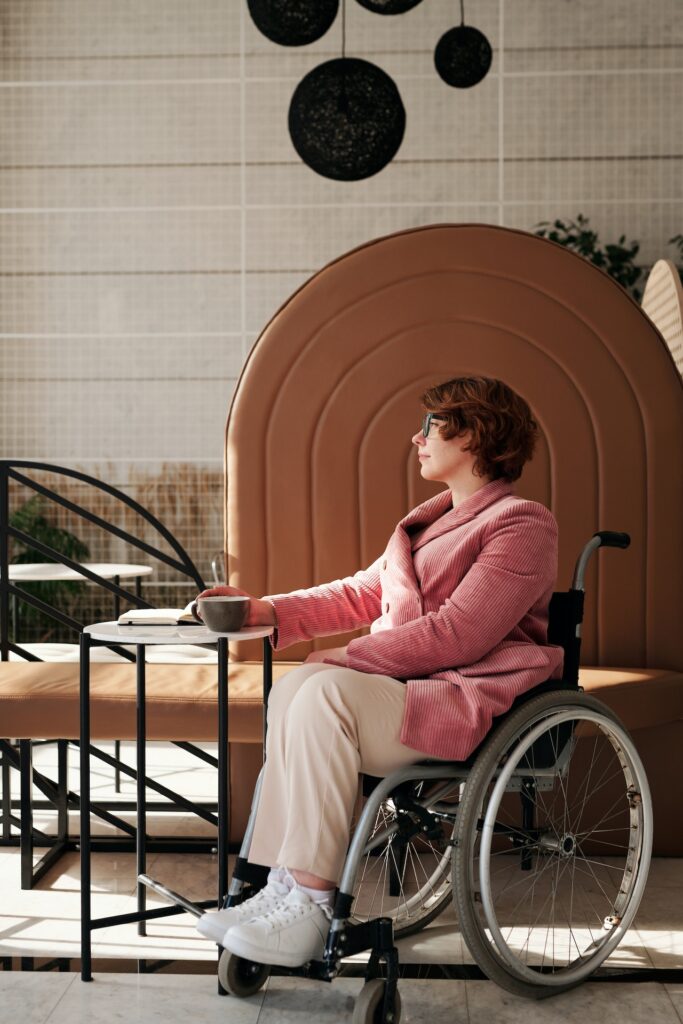At heart, we are explorers, dreamers yearning to experience the allure of new destinations. The thrill of traversing unfamiliar landscapes, the pleasure of diving into different cultures, and the serenity found in the heart of nature — travel is undeniably transformative. It is possibly why 19.1 million visits overseas were made by UK residents in 2021.
Yet for those of us navigating life with a wheelchair, the prospect of travel can often be overshadowed by concerns of accessibility and comfort. But the world has been evolving, and the boundaries once limiting wheelchair users riders are gradually dissolving.
This is our call to adventure — our invitation to look beyond boundaries and embrace the thrill of discovery. Whether you’re a seasoned traveller or planning your first expedition, this article is your guide to redefining possible and broadening your horizons.
Decide On Transport
The mode of transport you choose for your journey is as essential as the destination itself. Consider your comfort, convenience, and accessibility features available when making this choice. If you plan to fly, research airlines with positive reviews from the mobility-impaired community. Check their policies on handling wheelchairs.
If you’re considering a road trip, ensure your vehicle can comfortably accommodate your device and is equipped with the necessary modifications. For rail travel, investigate the level of assistance provided at stations. Your transport decision can significantly influence your travel experience, so take time to plan and prepare for a journey that’s as smooth as possible.
Mobility Device Smarts
Before embarking on your travels, it’s vital to familiarise yourself with your mobility device’s ins and outs. You might have considered upgrading to a powered wheelchair to help you enjoy a more flexible life. Ensure it is in top working condition, and don’t forget to service it before you leave. A basic toolkit, extra batteries or chargers, and spare parts such as tyres or joysticks can be a lifesaver. Keep in mind your destination’s terrain and weather conditions to anticipate any possible challenges.
If it’s foldable, practice disassembling and reassembling your device, as you may need to do this during transit. Mastering your mobility device isn’t merely about its operation but knowing how to handle it in a travel context. Your device is your companion in this journey, and understanding it thoroughly ensures a smoother, hassle-free experience.

Choosing Your Destination
Selecting the right destination is a pivotal part of planning your travel. Of course, you want to visit somewhere you have always wanted to explore, or you might have an idea of your dream holiday. Fortunately, in recent years, many cities and regions around the world have made impressive strides towards improving accessibility. This has helped to make them ideal travel hotspots for wheelchair users and mobility scooter riders.
From the gently sloping walkways of Barcelona to the universally accessible public transport of Berlin, or the disabled-friendly parks of Sydney, there is an exciting array of accessible travel destinations awaiting you.
Interestingly, the former is regularly voted as the most wheelchair friendly city in the world. Indeed, Barcelona has made significant strides in accessibility, with over 90% of its metro stations being wheelchair-accessible and a commitment to achieve 100% accessibility by 2024. All buses in Barcelona are already wheelchair-accessible. Additionally, the city’s layout, which is relatively flat and largely free of cobblestones, makes it easier for wheelchair users to navigate.
However, it’s worth noting that other cities around the world have also been recognized for their efforts in improving accessibility. For instance, Washington, D.C. is considered the gold standard in wheelchair accessibility in the United States.
In Asia, Singapore stands out for its extensive accessibility measures, including accessible escalators, elevators, toilets, pedestrian walkways, taxi stands, and bus shelters. Amsterdam in the Netherlands is also noteworthy for its network of bike lanes, which can be used by wheelchair users for smooth rides.
In terms of countries, Spain and the Netherlands are often cited as some of the most wheelchair-friendly countries, with comprehensive public transportation systems and numerous attractions that have been renovated for wheelchair access.
Regardless, it’s essential to spend time researching the accessibility of potential locations, considering factors such as terrain, local transportation, accommodation, and attractions.


Harness The Power Of Online Resources & Community
Most of that research we just mentioned is, of course, going to take place online. Here are some of the top travel blogs and resources that provide valuable information, inspiration, and insights for disabled travellers:
- Curb Free with Cory Lee: This is one of the most popular travel blogs for wheelchair users. Cory Lee shares his own experiences travelling and provides practical advice for their readers.
- Wheelchair Travel: On this blog, John Morris shares his experiences and tips about travelling with a power wheelchair.
- Spin the Globe: Sylvia Longmire, a service-disabled veteran, shares detailed travel guides and tips for wheelchair users.
- Have Wheelchair Will Travel: This Australian-based blog focuses on family travel and includes a section for special needs resources.
- Simply Emma: Emma, a UK-based blogger living with Muscular Dystrophy, shares her travel experiences and event access reviews.
- Anything Is Possible Travel: This blog provides information on accessible travel, with reviews of hotels, restaurants, and attractions.
- Accessible Go: This is not exactly a blog but a comprehensive travel network with a mission to make travel easier for people with disabilities.
There are also several websites and apps designed to assist disabled individuals in planning and enjoying their holidays with ease. Here are a few:
- Accomable: This was an Airbnb-like website is specifically designed for travellers with disabilities. However, it has now been acquired by Airbnb and its listings are incorporated into the Airbnb website.
- Wheelmap: This is an app that allows users to find and mark accessible places all around the world. It’s user driven, meaning that anyone can add and verify places.
- AccessAble: Formerly DisabledGo, AccessAble provides online access guides in a great deal of detail to a huge range of venues.
- Access Earth: An app that rates places – such as hotels, restaurants, and tourist attractions – based on their accessibility for people with physical disabilities.
- TripAdvisor: While not specific to those with disabilities, users often provide detailed reviews that can help in assessing the accessibility of various locations.
- Google Maps: Google Maps recently added a feature that shows wheelchair accessibility at locations.
- AXS Map: A tool powered by Google Maps that allows users to rate and search for accessible places.
Remember, it’s always also good to call ahead or directly reach out to services, hotels, or attractions to ensure they can accommodate your specific needs.


Navigating Air Travel From Booking To Arrival
Air travel can often seem daunting for those of us reliant on a wheelchair or mobility scooter. However, with the right preparation, it can be a breeze. When booking, inform the airline about your mobility needs, including assistance at the airport and during the flight. Ensure they have clear information about your device, including dimensions and whether it’s foldable. On the day, arrive earlier than usual to allow ample time for check-in and security procedures.
Airlines typically offer early boarding to passengers with mobility needs. Remember, your rights as a passenger with reduced mobility are protected under the EU Regulation (EC) No 1107/2006 (and equivalent legislation worldwide), so don’t hesitate to request assistance when needed. From the moment you book to the time you arrive at your destination, having a clear plan will make your air travel experience smoother and more enjoyable.
What To Look For In Accommodation
Once you’ve chosen your destination and booked your transport, securing accessible accommodation is the next step. As accessibility can vary greatly among hotels, it’s important to ask specific questions before booking. Check if the hotel has step-free access, lifts, and sufficiently wide doorways and corridors for your device. Ask about accessible bathroom features, such as grab rails and roll-in showers. If possible, request photographs of these spaces to get a better sense of what to expect.
Location is another important aspect to consider. Is the hotel close to the attractions you wish to visit? Are there accessible restaurants and shops nearby? Is it in a flat area, or located on a hill? Being meticulous while selecting your accommodation will ensure that you can relax and enjoy your stay comfortably, making your travel experience even more memorable.
Preparing For The Big Adventure
Travel, for many, is a form of liberation — a chance to explore new horizons and create enriching experiences. Navigating travel with a wheelchair or mobility scooter may present its unique challenges. However, they are by no means insurmountable. Armed with the right preparation, reliable resources, and an adventurer’s spirit, the world is your oyster.
Each journey you embark on is more than a trip; it’s a statement that you are not defined by your mobility device, but by your passion for discovery and adventure. The world is waiting, and it’s more accessible than you might think!





